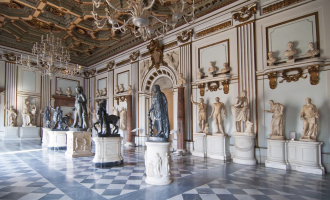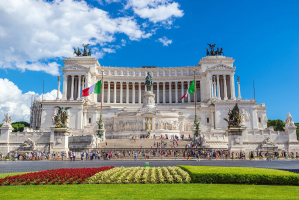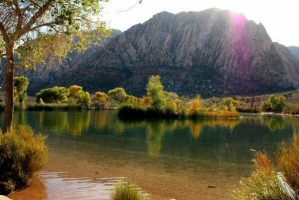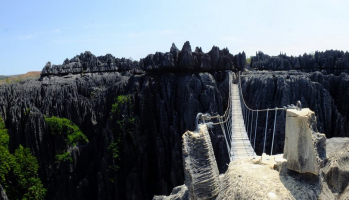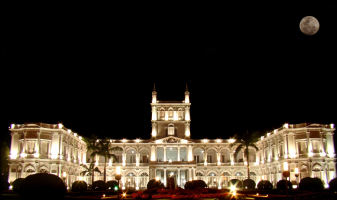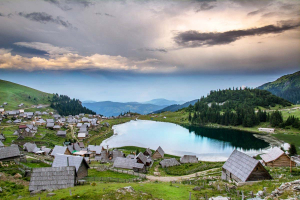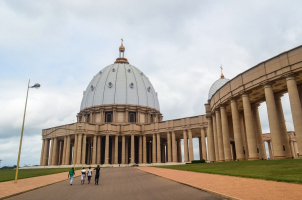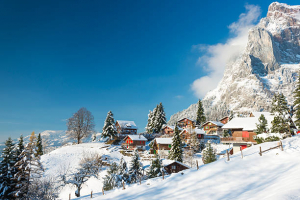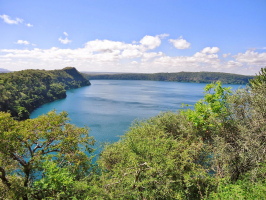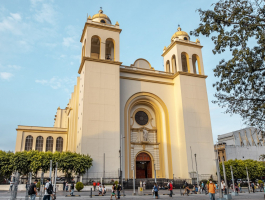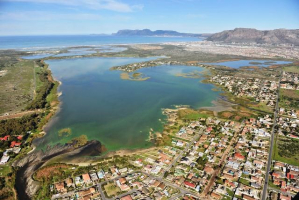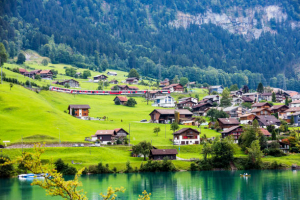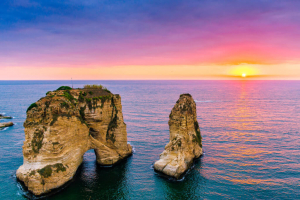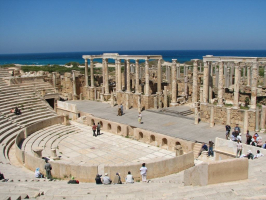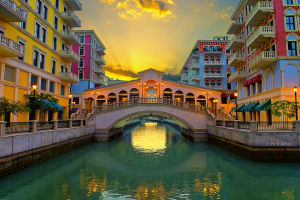Top 10 Best Churches to Visit in Rome
For many centuries, the majority of tourists to Rome came to see the churches. The majority of tourists today still go on pilgrims, but many also go to see ... read more...Rome's churches for their architecture and the priceless works of art they contain. The greatest masterpieces, including Michelangelo, Raphael, Bernini, Caravaggio, Sansovino, and Filippo Lippi, as well as numerous other, unidentified medieval and older masters of mosaic art, fresco painting, and stonework, are represented in them. Below are some of the best churches to visit in Rome you can refer to!
-
The Apostle, who is thought to have been the first Bishop of Rome and thus the first Pope, is honored in St. Peter's, the most well-known church in all of Christendom. The first St. Peter's Church, which was constructed under the patronage of Emperor Constantine, was dedicated in 326. Pope Nicholas V made the decision to construct a brand-new church in 1452, but it wasn't finished until the late 18th century.
The enormous interior of the basilica is home to Michelangelo's famed Pietà, which was finished in 1500 and is protected by a reinforced glass panel. The beautifully decorated Chapel of the Sacrament, which features artwork by both Bernini and Borromini (for the bronze grille and tabernacle, respectively), as well as the massive dome created by Michelangelo, are further attractions of St. Peter's. Be sure to view the beloved bronze statue of St. Peter Enthroned and the Papal altar with a bronze baldacchino (canopy), which Bernini created when he was just 25 years old and is a masterpiece of Baroque sculpture, over the tomb of St. Peter. Famous Popes' tombs, including those by Bernini and other notable artists of his era, are located in the left aisle. The crypt has more papal tombs.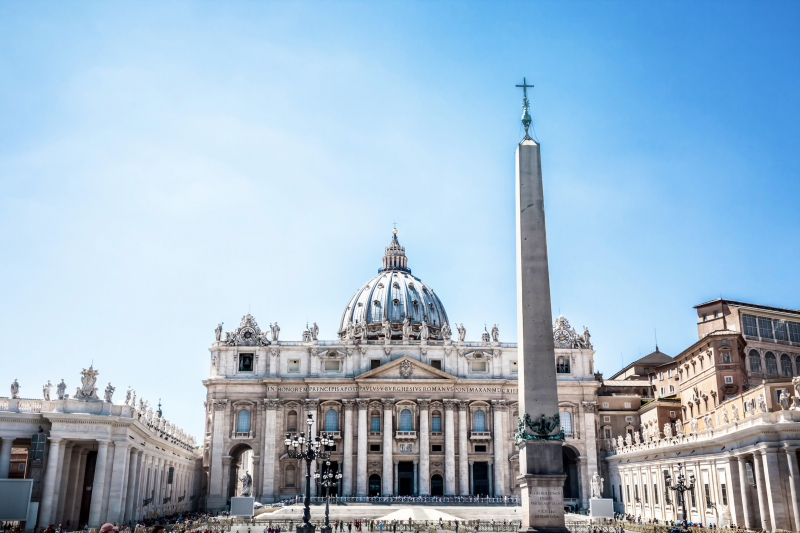
Basilica di San Pietro in Vaticano (St. Peter's Basilica) 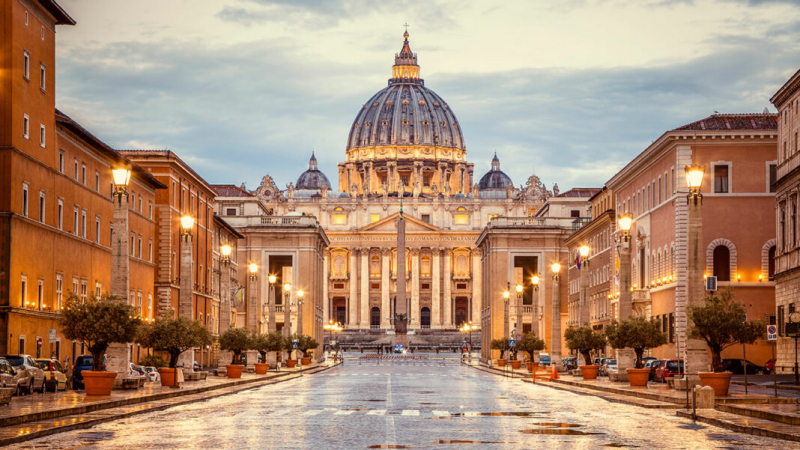
Basilica di San Pietro in Vaticano (St. Peter's Basilica) -
Santa Maria Maggiore, one of Rome's four patriarchal basilicas and a significant pilgrimage site, has the distinction of being the only Roman church to have offered daily mass since the fifth century. The Virgin directed the fourth-century Pope Liberius to construct a church where the following day's snow fell, which is where the basilica is presently located. The Pope gave the order to build the church when the snow started to fall on Esquiline hill the following morning, August 5.
Later additions included a new apse in the 13th century, Rome's tallest campanile in 1377, and Giuliano da Sangallo's gold coffered ceiling in the late 15th century, which featured the first gold from America. Transepts are formed by two side chapels that were added in the 16th century. Cappella Sistina, on the right, includes a bronze tabernacle and the tombs of two popes, while Cappella Paolina features an altarpiece with ornate decorations. Despite being a 13th-century sculpture, the highly regarded Virgin image on the high altar's veil is typically attributed to St. Luke. With its three aisles being divided by 36 marble and four granite columns, this 86-meter-long interior is among the best and most opulent in all of Rome. The top part of the walls is decorated with Rome's oldest mosaics, which date to the fourth or fifth century, while the floor is filled with Cosmatesque work, a complex geometric inlay of colored stone that dates to the middle of the 12th century.
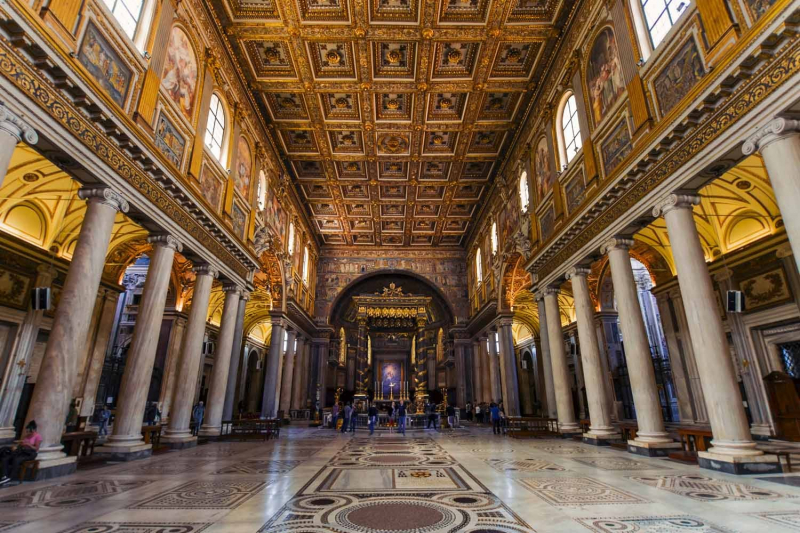
Basilica di Santa Maria Maggiore 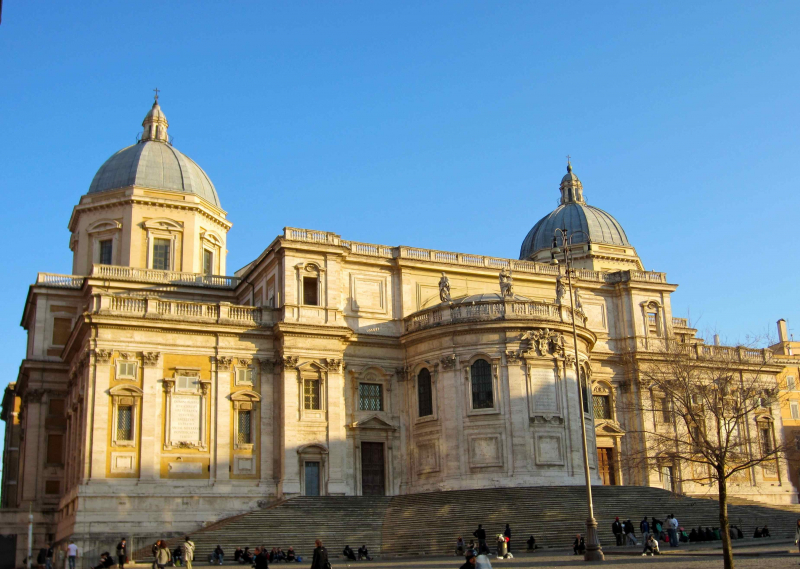
Basilica di Santa Maria Maggiore -
Built-in 313 with the construction of a large church, San Giovanni underwent numerous expansions and modifications before being nearly entirely reconstructed in the 16th and 17th centuries. However, in this Baroque reconstruction by Borromini, the basilican plan of the old Constantinian church was respected.
The expansive facade is a masterwork of late Baroque architecture, with its enormous statues built in 1735 by Alessandro Galilei. The ancient Curia in the Forum provided bronze for the doors. The stunning timber ceiling within was constructed in the sixteenth century. There are several beautiful mosaics that are replicas of early Christian originals in the apse, behind the presbytery. You can access the cloister from the left aisle, which is a masterpiece of Vassalletti family architecture from the 13th century. Constantine replaced a Roman nymphaeum in the Lateran Palace with the octagonal San Giovanni in Fonte baptistery. It is the oldest baptistery in all of Christendom and served as a model for later ones in Italy and the rest of Europe.
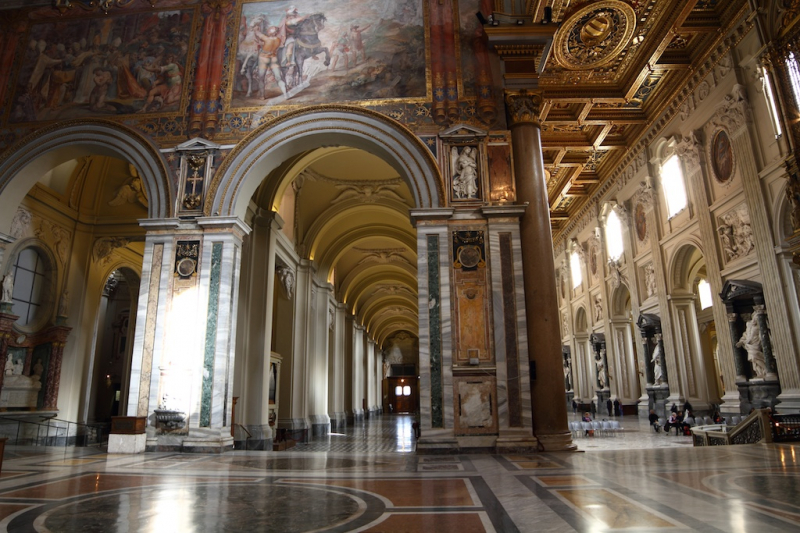
San Giovanni in Laterano (St. John Lateran) 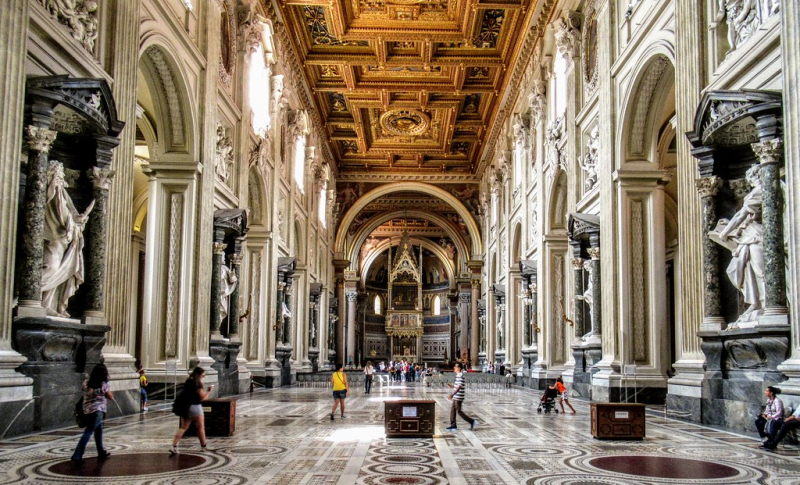
San Giovanni in Laterano (St. John Lateran) -
According to legend, this church, which is located outside the Pincio Gardens, was originally a chapel intended to ward off the evil spirit of Nero. It was expanded by Bramante in 1505, serving as the church for the Augustinian canons, and later underwent restoration by Bernini.
The church has a beautiful Renaissance façade, dome, and campanile. During his stay in Rome in 1510–1511, Augustinian Martin Luther lived in the order's house; nevertheless, after the Reformation, other Augustinians shunned the altar where he had celebrated mass. There are several tombs in its three aisles and side chapels, including two in the choir by Andrea Sansovino. Pinturicchio painted frescoes of the Coronation of the Virgin on the choir's vaulting. Raphael created the second chapel on the left in 1515 for the Chigi family, and the Cesari Chapel in the north transept has two well-known works by Caravaggio, the Crucifixion of St. Peter and the Conversion of St. Paul.
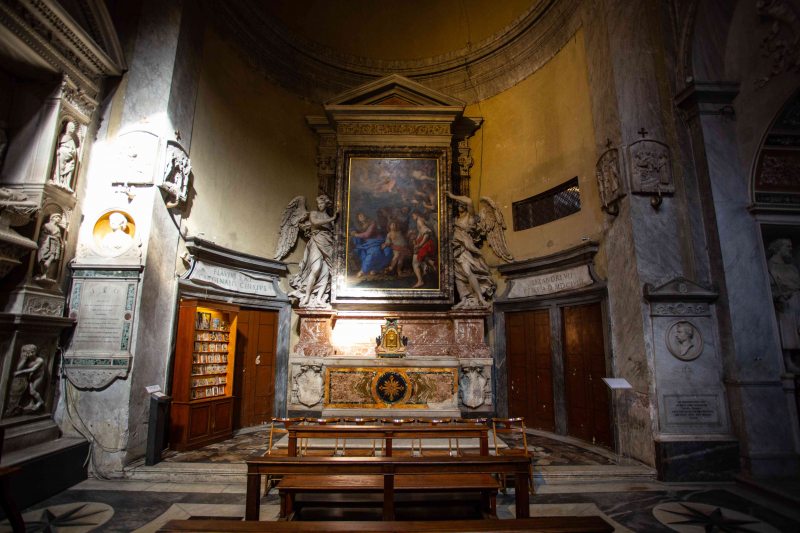
Santa Maria del Popolo 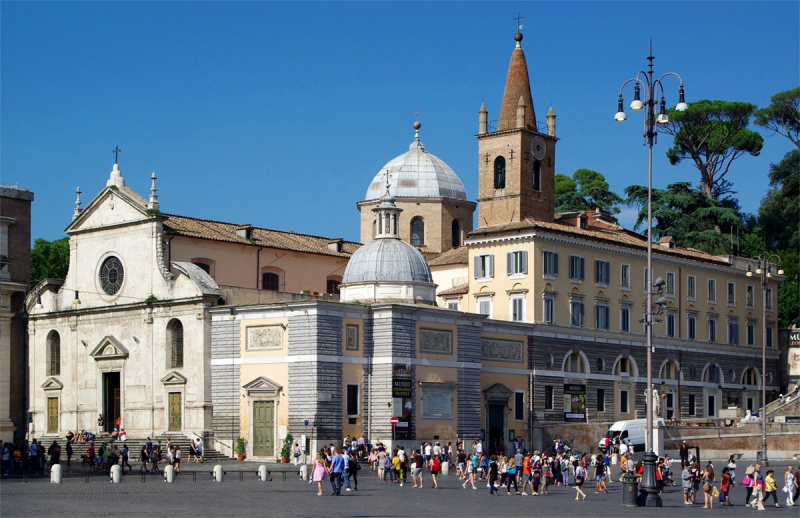
Santa Maria del Popolo -
The Pantheon, which is prominent among the city's Roman-era landmarks and was constructed around AD 120 as a temple to honor Roman deities, is now a Catholic church. It has been since Pope Boniface IV converted it and dedicated it to St. Mary and the Martyrs at the start of the seventh century.
The building has essentially not changed over the centuries, even though its stones, columns, statues, and even a portion of the original bronze ceiling were cannibalized for other purposes (in the 1600s Pope Urban VIII ordered the portico ceiling to be melted down to cast cannons for Castel Sant'Angelo), and its dome is still the largest unreinforced concrete dome in the world. Since the Renaissance, notable people have been buried at the Pantheon, including Vittorio Emanuele II and Umberto I, the two Italian kings, Raphael, and composer Arcangelo Corelli. Since the summer of 2018, the Pantheon has started to collect a small admission price, ending centuries of being one of the free activities in Rome.
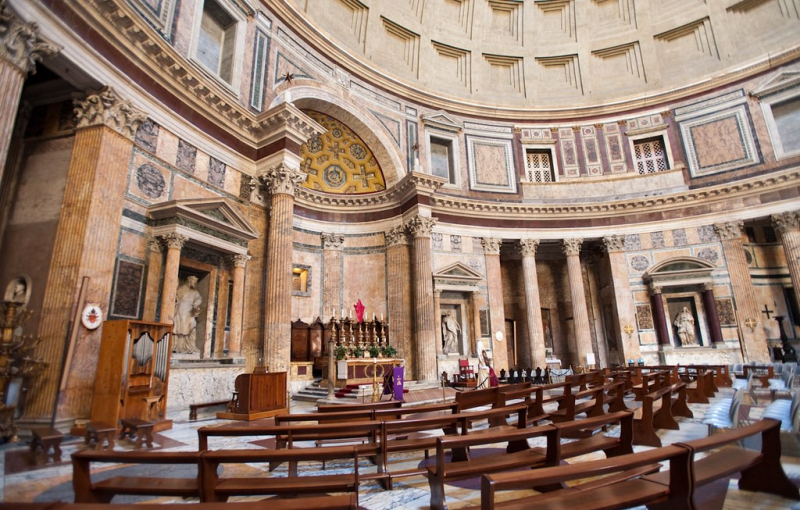
Pantheon (Basilica of St. Mary and the Martyrs) 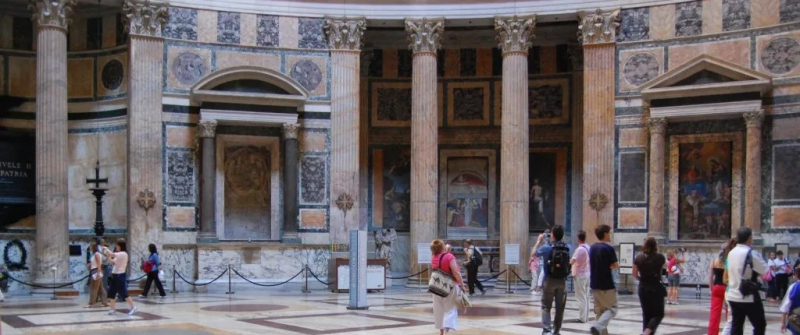
Pantheon (Basilica of St. Mary and the Martyrs) -
It's possible that Santa Maria in Trastevere, a populous area on the right bank of the Tiber, was the first church in Rome where Christians were permitted to hold services in public. It was constructed beginning in the year 221 and was finished in the year 340. It was restored in the 12th century and redecorated in the Baroque era.
The church is equipped with a Romanesque campanile, a mosaic-covered front, and a portico that houses early Christian sarcophagi. It's difficult to decide which interior feature to notice first: the exquisite marble floor inlay, the gilded, coffered wood ceiling, or the magnificent medieval mosaics in the apse. These depict episodes from the life of the Virgin by Pietro Cavallini in the late 13th century below a frieze of lambs and above Christ, the Virgin, and saints. Mino del Reame built the tabernacle at the western end of the nave, which is seen there.
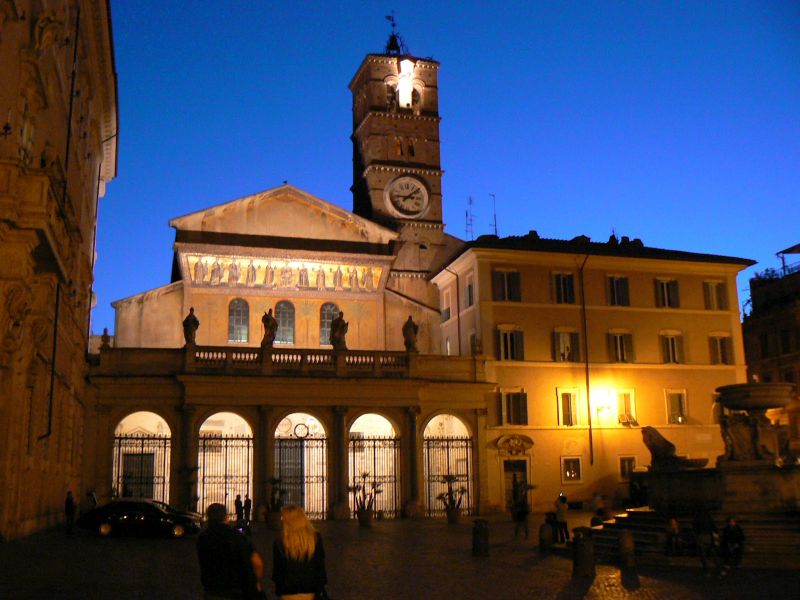
Santa Maria in Trastevere 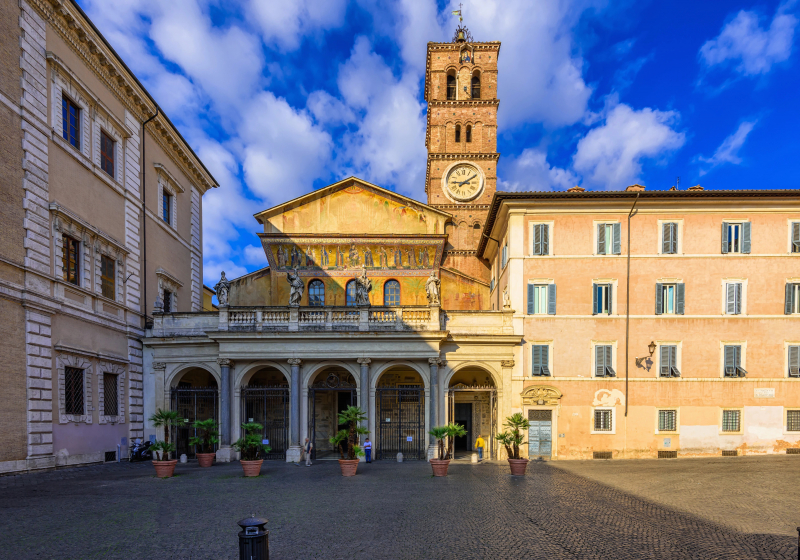
Santa Maria in Trastevere -
A Roman girl who was martyred at the age of 14 lived in the house where the 9th-century church now stands, and it is worth visiting for a number of reasons. Despite not having much-written evidence, Saint Cecilia was one of the most revered early virgin martyrs of Rome. She is one of the seven women commemorated by name in the Roman Canon.
Pietro Cavallini, a precursor of Giotto, created the outstanding fresco of The Last Judgement in the 13th century, and Maderno's stunning sculpture of St. Cecelia was based on the saint's incorrupt body that was exhumed in the 16th century. The foundations of a Roman house and a beautiful medieval sacristy with a secret are found beneath the church, which also has some lovely mosaics. However, the sacristy isn't actually from the Middle Ages; rather, it was built in the 19th century in an effort to recreate some of the beauty of medieval works that had been lost in Rome.
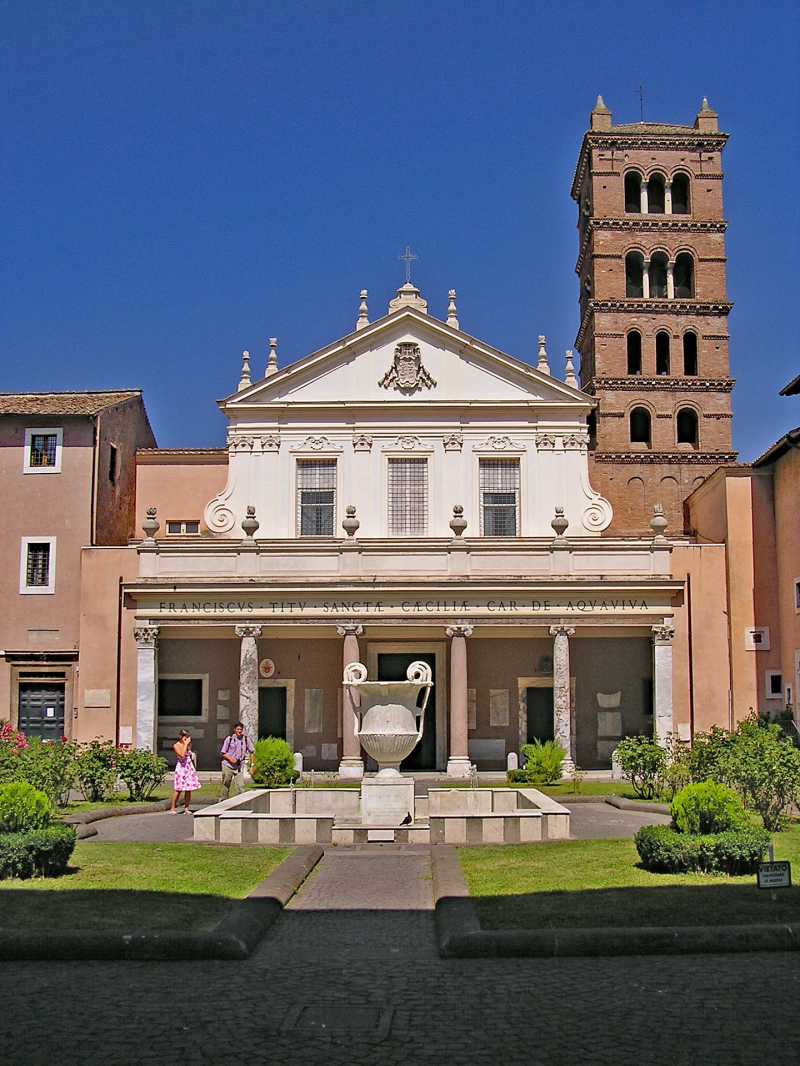
Santa Cecilia in Trastevere 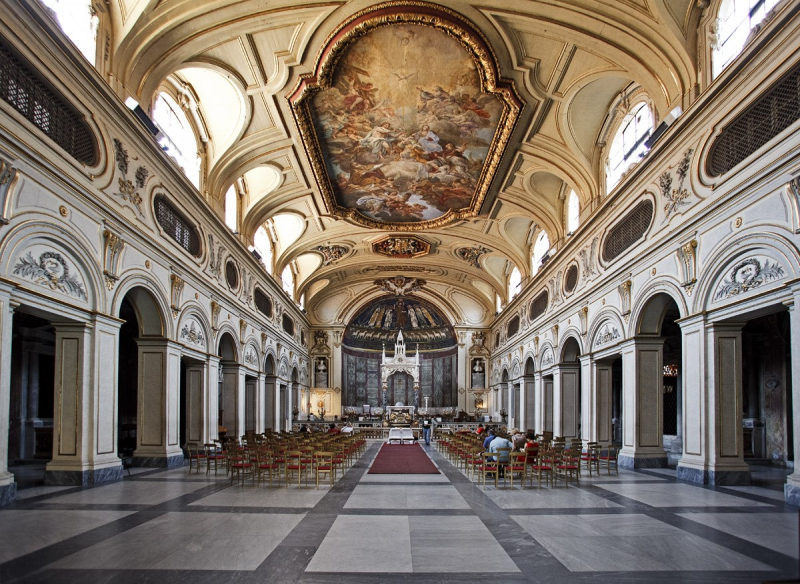
Santa Cecilia in Trastevere -
The Basilica of the Holy Cross in Jerusalem, one of the seven pilgrimage churches, was constructed in the early fourth century to hold the enormous collection of holy relics that St. Helena, the mother of Constantine, had brought to Rome from Jerusalem.
The interior is divided into three parts with twelve colossal ancient granite columns, four of which were incorporated into pillars in the 18th-century renovation. At the center of the apse, decorated in the half-basin with paintings attributed to Antoniazzo Romano, is the magnificent Tomb of Cardinal Francesco Quiñones by Jacopo Sansovino. Artifacts from the Crucifixion, including portions of the True Cross, the Grotto of the Nativity, and other holy relics, can be found in the relic chapel. These have been displayed in a chapel built specifically for their protection and display since the 1030s, maintained in 19th-century reliquaries. After being rebuilt in the 18th century, the church from the fourth century has little to show for it, but the later Baroque church still contains the original granite columns.
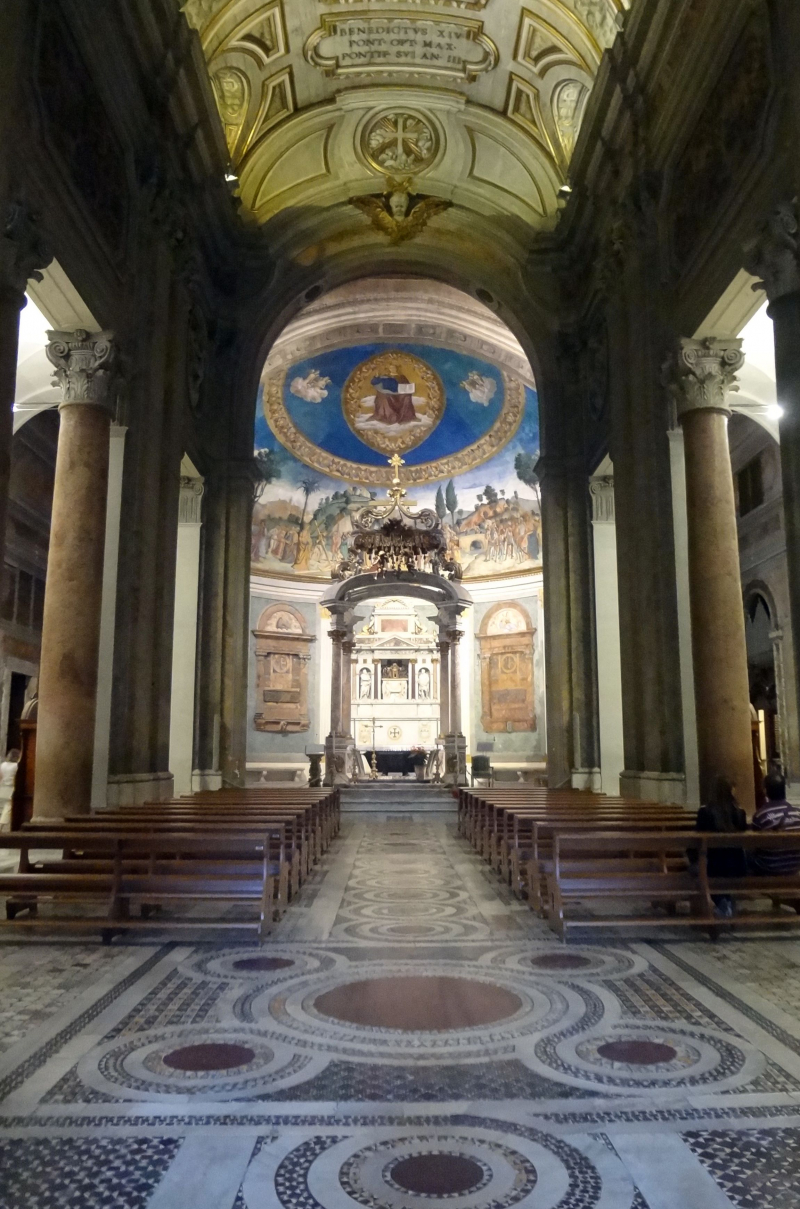
Basilica di Santa Croce in Gerusalemme 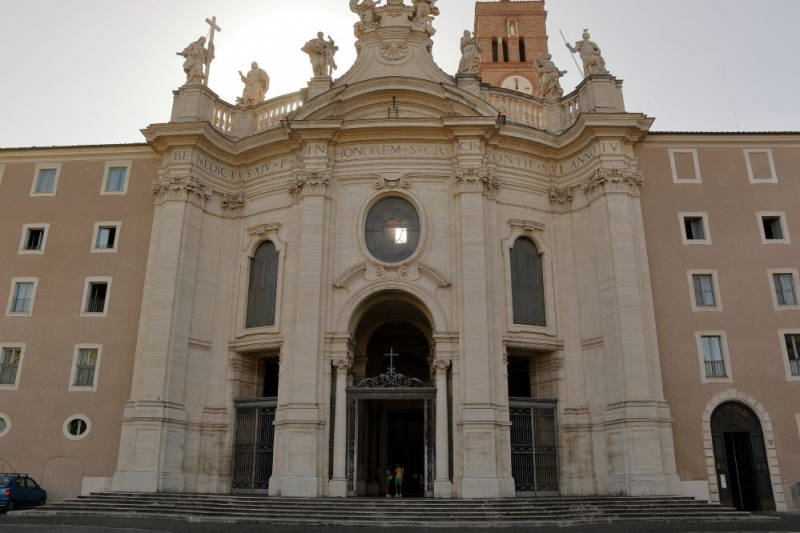
Basilica di Santa Croce in Gerusalemme -
Santa Maria Sopra Minerva is Rome's largest Gothic church and was constructed on the site of an ancient Minerva temple, hence its name. Its central location and Dominican preaching order's service made it popular with the people of Rome, and with the number of grave slabs on the floor and on the walls, it shows a significant role in the city's religious life.
Construction on the building began around 1280 and was finished in 1453. The Carafa Chapel, also known as the Chapel of the Annunciation of St. Thomas, is the most well-known of the three-aisled basilica's memorial chapels and is noted for its Filippo Lippi frescoes. It is located near the end of the south transept. These feature scenes from St. Thomas Aquinas' life to glorify both the Virgin and the Dominican order member. The relics of St. Catherine of Siena are kept on the high altar, and Michelangelo's statue of the risen Christ, dating from 1521, sits in front of the altar on the left.
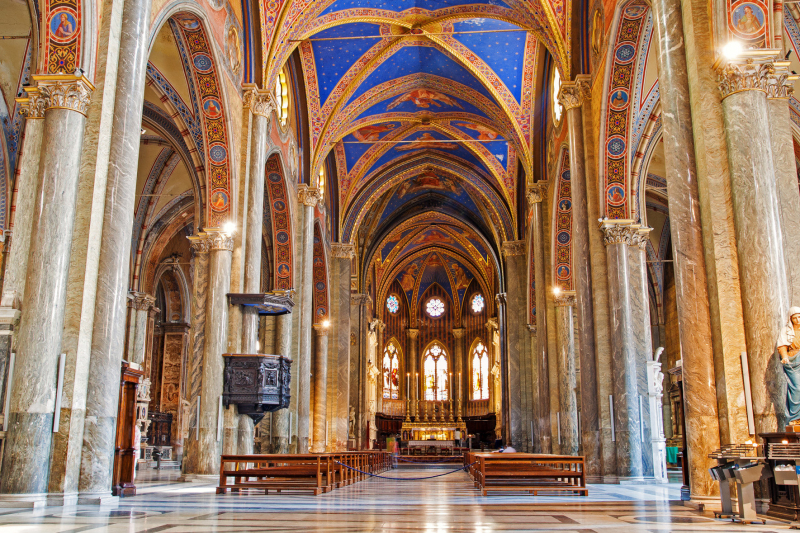
Santa Maria Sopra Minerva 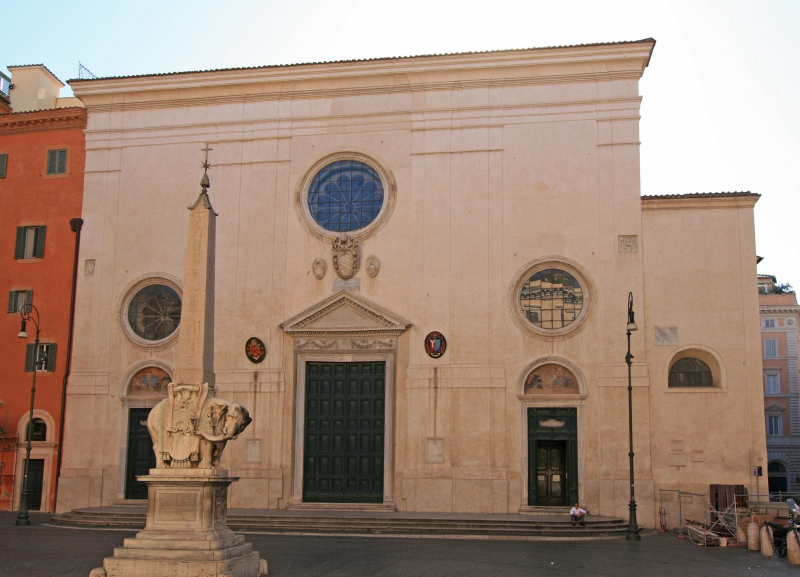
Santa Maria Sopra Minerva -
San Clemente, one of Rome's earliest and most magnificent churches, was constructed before 385 by early Christians on the site of a house containing a shrine of Mithras – now far below street level. A new basilica was built over the ruins of this church, which the Normans had destroyed in 1084, around the start of the 12th century.
With a porch at the entry, an atrium with a fountain, the nave where the congregation worshipped, and the high altar and apse, areas reserved for the clergy, the upper church reflects the traditional basilican structure. Keep an eye out for the historic columns and beautiful marble inlaid work on the floor, screens, Easter candlesticks, tabernacle, and bishop's throne. Masolino's early Renaissance frescoes in the small St. Catherine's Chapel at the west end of the north aisle, which were finished before 1431, are also noteworthy. These scenes from St. Catherine of Alexandria's life are significant because they show Rome's first use of perspective painting.
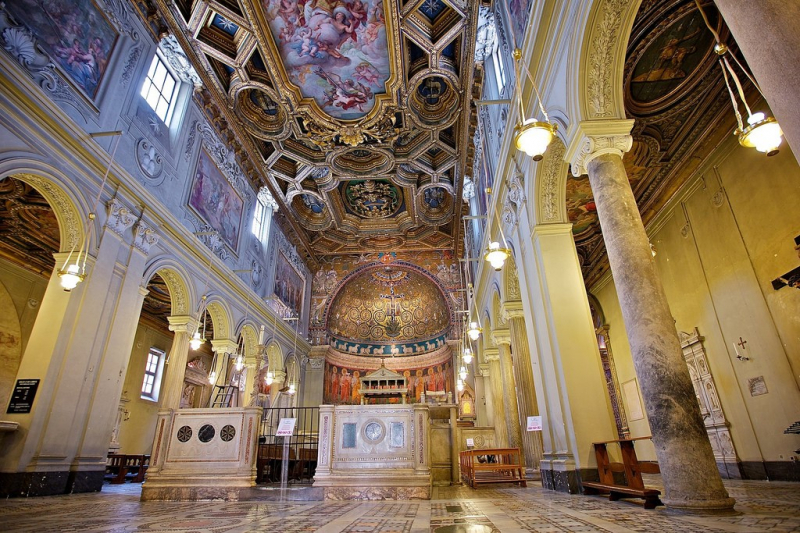
San Clemente 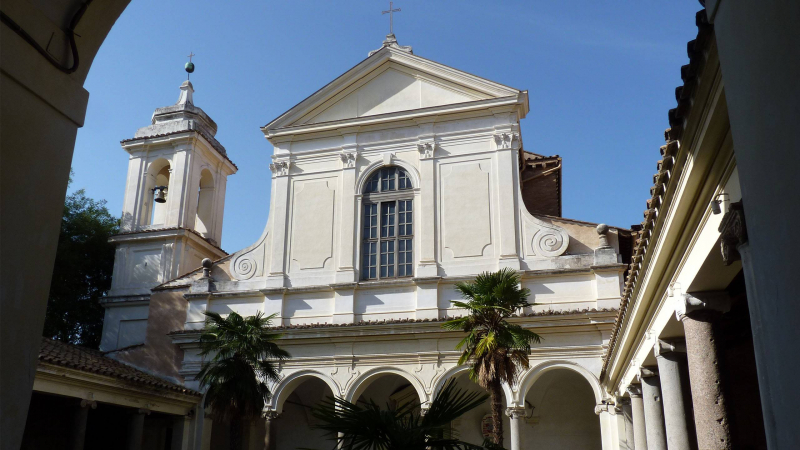
San Clemente












